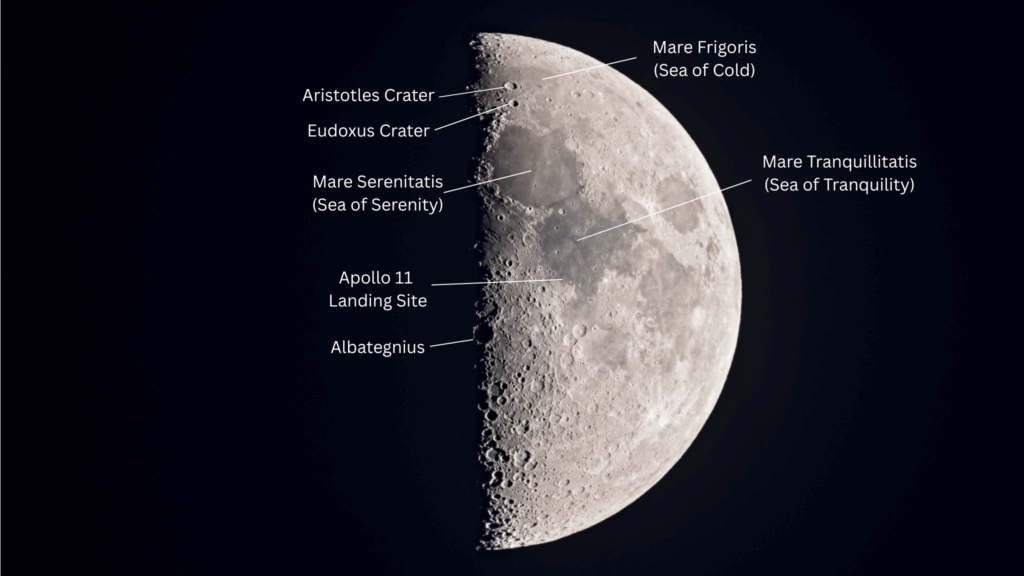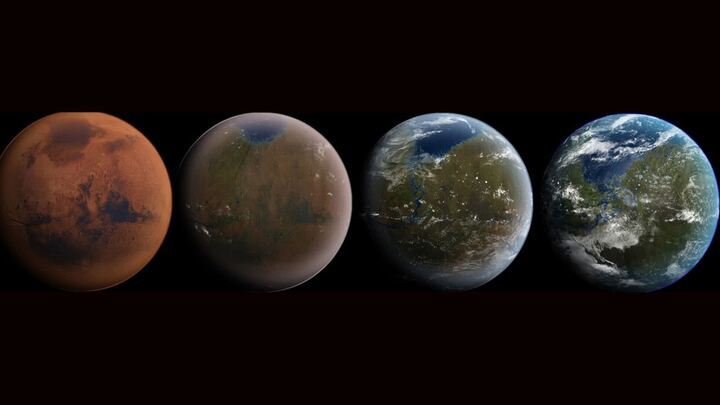Here is something that you might remember from your high school earth science class: As sunlight — which appears to be pure white — passes through a glass prism, it refracts or bends. Different wavelengths of light are bent by different amounts. In this way a prism can spread out a ray of white light into the rainbow spectrum.
The spread of refractive colors can be observed in poor-quality binoculars and telescopes. In such inexpensive instruments the optics tend to be not aligned properly so sometimes you’ll see the full moon appearing with a yellow-orange tinge on one side and a bluish tinge on the opposite side.
Once again, however, remember that the sun and also the moon — because it reflects direct sunlight back toward Earth — is really composed of a “stack” of different colored images. Perhaps you can recall the fictitious name “Roy G. Biv,” where each letter represents a color in the spectral lineup: Red, Orange, Yellow, Green, Blue, Indigo and Violet.
Of course, we normally view that stack of colors all at the same time, so as to appear more or less white.
Related: Planet Earth: Everything you need to know
Atmosphere can act like a lens
Now when the sun lies near to the eastern or western horizon, Earth’s atmosphere behaves in a similar fashion to poor-quality optics, by separating the stack of different-colored images. The green and especially the blue images are composed of short wavelengths and are scattered by the air. The red and orange images are composed of long wavelengths that are more penetrating and as a result, they produce the red and orange colors seen at sunrise and sunset.
But there are very special cases, when the sky is very clear and exceptionally transparent, that a very tiny segment of the green image can be glimpsed just as the very topmost part of the sun is rising or setting. This rather rare phenomenon is known as the “green flash.” The green color is produced by atmospheric refraction of light, which causes objects near the horizon to appear slightly higher in the sky than they really are. Refraction is stronger for blue and green light than it is for yellow and red light, so the blue light of the sun is lifted somewhat more than the red light. This weak prismatic effect of the atmosphere results in a bluish or greenish fringe on the upper edge of the sun — much like the effect of viewing the moon through poorly aligned optical instruments.
Contemporary sightings
Amazingly, the first references to the green flash are comparatively recent — only within about the last 160 years. This seems a bit strange, since one might have thought that the assiduous skywatchers of ancient China, Japan and Babylonia would have taken note of the phenomenon.
The earliest undisputed scientific record of the green flash was made by a “W. Swan” in 1865 when he saw a “dazzling emerald green” flash at sunrise over a distant mountain. Interestingly, however, Swan did not publish his observation until 1883 — the same year that people around the world were reporting views of green suns and other weird phenomena occurring in the wake of the massive eruption of the Krakatoa volcano.
Some believe that the 1882 Jules Verne novel, Le Rayon vert (“The green ray”) attracted general attention to the phenomenon and the great British mathematician, physicist and engineer, William Thomson (known in his later years as Lord Kelvin) made reference to Verne’s novel when he wrote of an 1899 sighting of an even rarer “blue flash” that he witnessed just as the sun was rising above Mont Blanc, Switzerland.
An evasive phenomenon
To stress how elusive the green flash can be, I would point out that I’ve been an avid skywatcher for over a half a century and have looked for the green flash on many different occasions, but have definitively sighted it only twice.
The first occasion was on the morning of May 14th, 1977 and was reported in the August 1977 issue of Sky & Telescope magazine pages 150-151). I and three other stargazing buddies drove approximately 30 miles (50 km) east of Manhattan to Caumsett State Park, a Long Island bird sanctuary, to view not one but two planets (Venus and Mars) hovering within 2 degrees of a waning crescent moon. Just before sunrise, it was readily apparent that the skies were exceptionally transparent and we all had a good feeling that we had a good chance at catching a glimpse of the flash. I happened to be looking through a Celestron 8 telescope just at the magic moment when the sun’s upper edge suddenly appeared dramatically over the nearby Connecticut shoreline as a beautiful emerald green which lasted nearly two seconds.
The other occasion came many years later, in June 2019 on board a cruise ship sailing to Bermuda. As my wife, Renate and I watched the sun descending toward the horizon, I noted that the clarity of the sky seemed quite good although I didn’t think it was clear enough to reveal the green flash. Slowly, the sun’s disk sunk below the horizon and just when the topmost part of the sun was about to vanish, to our great surprise, we were treated to an exceedingly brief, brilliant greenish point of light on the horizon.

Viewing tips
And that is the capriciousness of sighting a green flash; seeing it appears to be the exception, not the rule. Sometimes it can appear during less-than-favorable conditions while at other times, conditions can seem favorable to see it and yet it fails to appear.
Here are some things you should look for in hopes of catching a view of a green flash:
- General conditions required are a distant, sharply-defined, and low (preferably sea) horizon.
- For a possible sunset sighting, avoid looking at the sun until the last moment. There is potential for eye damage; what is more, the bright red image of the sun can, after the sun sets, leave a green afterimage in the eye that might be mistaken for the green flash.
- Cool weather and absence of haze and red tints seem to favor visibility.
- For a possible sunrise sighting, that point along the horizon where the sun will rise, some minutes before sunup, might be fringed in a bright white or yellowish glow. Some call this the “bonfire effect,” and sometimes seems to bode well for sighting a green flash. Before catching the flash in 1977, I saw the “bonfire” glowing along the distant horizon. That was the prelude to my first view of the green flash.
I wish you the best of luck, and hope you will experience the same pleasure!
Joe Rao serves as an instructor and guest lecturer at New York’s Hayden Planetarium. He writes about astronomy for Natural History magazine, the Farmers’ Almanac and other publications.


